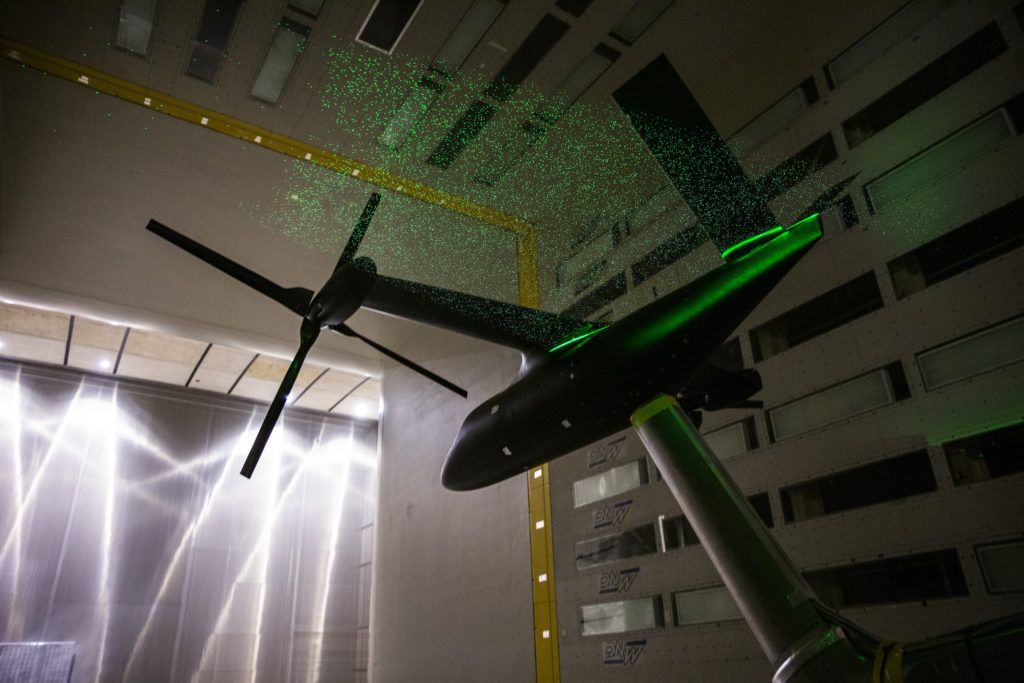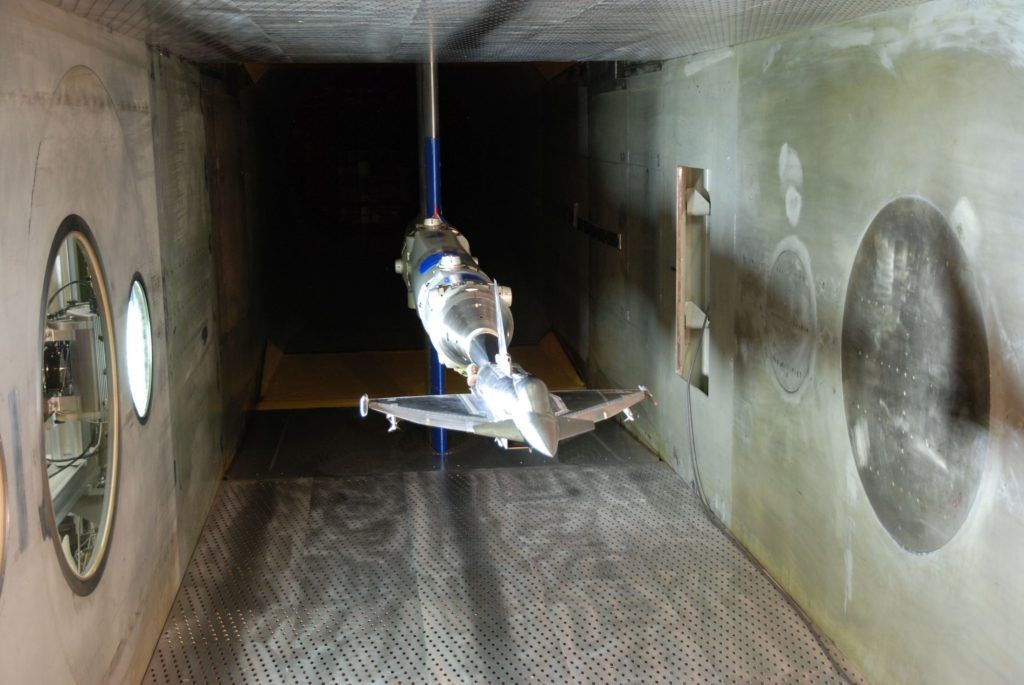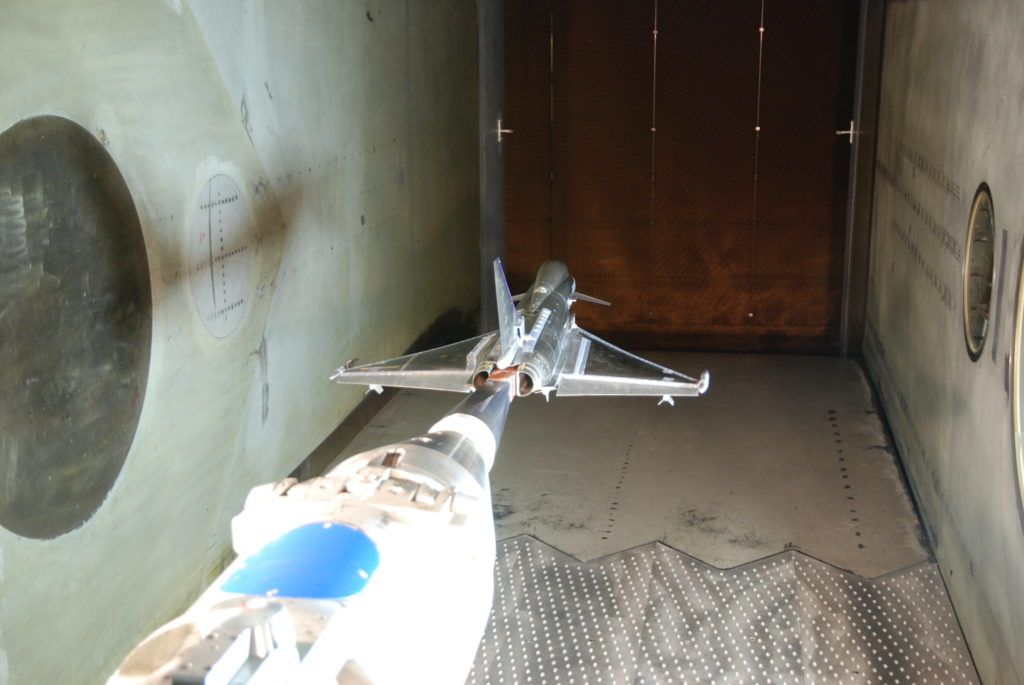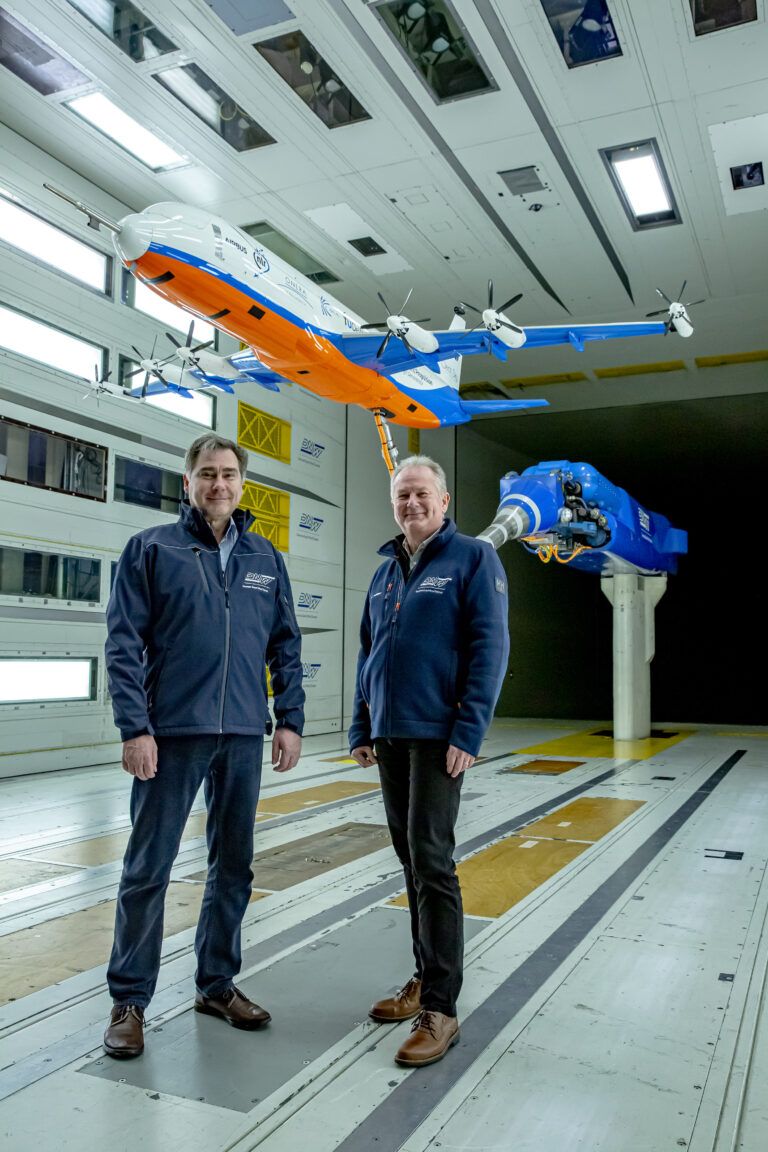German-Dutch Wind Tunnels (Deutsch-Niederländische Windkanäle/Duits-Nederlandse Windtunnels – DNW) is one of Europe’s foremost organizations for wind tunnel testing. Established in 1976, DNW has played an important role in the development of the aviation sector. The international joint venture is so well-respected it is perhaps more accurate to describe it as a European institution rather than a mere organization.
DNW’s main site at Marknesse in the Netherlands hosts two subsonic wind tunnels of in total seven facilities over four locations in the Netherlands and Germany, ranging from subsonic to supersonic. It is also home to a group of experts able to provide some of the industry’s most advanced experimental aerodynamic simulation capabilities.
Marknesse’s centre piece is the largest wind tunnel in Europe, the 9.5m-wide (31ft) large low-speed facility (LLF). Commissioned in 1981, the LLF’s acoustic qualities and the fidelity of the aeroacoustic testing it can provide has made it an indispensable tool to engineers on many high profile programs over the decades.
DNW’s wind tunnels have been used in the development of all of Airbus’ aircraft, from the A300 to the A380 and A400M, as well as numerous helicopters. They have been used for programs outside of Europe, such as the Embraer E-jet family. In addition, the facility and its experts have been instrumental in the development of several military aircraft, including the Eurofighter and F-35 STOVL (Short Takeoff and Vertical Landing) variant.
Today, this exemplar of European aeronautical cooperation remains at the forefront of aerospace testing and validation. By investing millions of Euros into its facilities while remaining in close partnership with the industry, DNW’s capabilities as well as its list of customers across civilian and military aircraft types is growing steadily.

aircraft configurations
Shared vision
When first meeting the management of DNW you have to check you aren’t seeing double. Joost Hakkaart and Andreas Bergmann are both general directors of DNW. Hakkaart acts on behalf of the Dutch side and Bergmann for the German side. Although unusual, the arrangement is not unique in DNW’s history, and seems harmonious enough. The directors have similar backgrounds, both being drawn from their respective Dutch and the German aerospace research agencies.
Bergmann and Hakkaart have each overall responsibility for the successful operation, maintenance and further development of the LLF and DNW’s six other facilities. DNW is structured to be as lean as possible, while enabling the Netherlands and Germany to each retain capabilities that serve the aerospace market. DNW’s three departments: aerodynamics, measurement and operations are present in both countries, serving two sites in Germany and two sites in the Netherlands.
DNW’s directors are cheerful and optimistic. After a period in the last decade that saw the amount of work and staff numbers drop, each of DNW’s wind tunnels are now back to 80 – 100% utilization. From a low of 76 staff in 2020, they expect the number of employees to grow to 120 next year, a return to levels last seen in the 2000s.
“We need more staff so we can run double shifts on the tunnels. We are significantly busier than pre-Covid,” says Hakkaart. “There is a big push on sustainable aviation and novel propulsion systems. There are completely new wing configurations being developed, varying from blended wing to long slender wings, as well research being done in laminar flow on sub and full-scale aircraft parts.
“The performance and behavior of these kinds of novel configurations are not easy to predict with CFD, which means the amount of experimental validation that is needed has increased.”
DNW’s wind tunnels are testing more propulsion systems – propellers and rotors as well as engine concepts for new fuels such as hydrogen and battery electric systems – for performance and noise. The introduction of Distributed Electrical Propulsion (DEP) systems, where multiple propellers are installed at different locations on the wing and body of an aircraft, complicates aerodynamics in new and difficult to
predict ways.
“OEMs are spending around the same amount of time using the wind tunnels per program, but due to the increased instrumentation and parallel measurement techniques, the amount of data gathered has significantly increased.
“With electrification and upcoming Urban Air Mobility, we’re also seeing the number of different and new customers growing,” says Hakkaart.

Investment programs
In the low-speed facilities there has been investment in high voltage infrastructure as well as high-power electric motors to support the testing of electric powertrains for new aircraft. For example, ongoing work is installing a test rig for electric driven propulsion with a power of 320kW within the limited space of 110mm diameter and 280mm length, to be used instead of turbofan propulsion simulators. Moreover, a growing part of DNW’s work is the testing of new designs and modifications to operational aircraft for the defense sector. To better serve this market, DNW’s high speed wind tunnel (HST) has undergone its largest upgrade program for 25 years.
“We have moved towards the military markets and fighter development because it’s a larger market for transonic wind tunnels,” says Hakkaart. “With the attitudes that they’re flying, the kinds of configurations and all the things that they hang underneath the wings, military aircraft often need experimental work.”
Perforated top and bottom walls have been installed to reduce shock wave interference effects for test conditions near Mach 1 in the HST. Control upgrades to increase model control speed and Mach control speed have doubled the tunnel’s productivity. “As we speak, we’re increasing the compressor capacity with the installation of an additional stage of compressor blades, to improve performance at supersonic conditions,” adds Hakkaart.
“Most transonic wind tunnels are from the 1950s and 60s and to improve them you need a deep understanding of how they work,” says Bergmann. “Like most other facilities we have lost a lot of knowledge about our transonic wind tunnels over the decades as the generations of engineers have changed.
“To improve the HST, CFD experts from DLR and NLR supported the improvements with insights into the flow physics in the transonic macro regime in a very short time. It enabled us to make the improvements with a high amount of confidence that they would work. A lot
of that work was done during the Covid-19 pandemic.”
Another impact of the pandemic was the development of remote testing. DNW continues to offer this service to help improve customer’s productivity. Bergmann says, “Delivering data remotely means the customer doesn’t have to travel. It also helps us be more agile, our schedule doesn’t have to be so fixed.”
eVTOL aircraft testing
A perennial challenge with the aerospace sector is its cyclical nature – an unfortunate result of the necessarily large and lengthy aircraft test and development programs. Although the sector is enjoying a burst of development activity currently, DNW’s directors know this will not last forever. Although serving military markets as well as commercial helps, the organization has also diversified to cater for the automotive sector.
Built in 2022 and commissioned in 2023 the Automotive Test Section (ATS) at the LLF is a three quarter open test section with a moving belt system developed for testing larger cars and small trucks up to 3.5 tons. It also comprises a flat track test bench to provide the coefficients necessary to determine not just aerodynamic drag but also the internal powertrain resistance according to the WLTP (Worldwide Harmonised Light Vehicle Test Procedure).
The ATS can be used for WLTP certification in the automotive market as well as for innovative aviation concepts.
“The Automotive Test Section is proving useful for eVTOL aircraft development. We don’t need the moving belt systems to recreate movement on the ground,” says Bergmann.
“So, we are supporting development primarily in the take-off and traversal conditions up to forward flight.
“Originally we had a separate floor that had to be built up, but with the ATS we can move it in and out of the circuit on air cushions and change it in a day.”

of attack sweeping of up
to 1°/s
Future strategy
Efforts to increase efficiency add up to increased productivity on the wind tunnels and more availability for external customers. Availability of the facilities at DNW can differ a lot. The wind tunnels, especially the LLF usually have to be booked around 12 months in advance if weeks of testing is required. However, short test campaigns of two or three days can normally be accommodated at a few weeks’ notice.
DNW’s future is based around a core of military and advanced civilian work in novel areas. “Our strategy for the next five years focuses on electrification, sustainability and eVTOLs and catering not just for airframes but also propulsion,” says Hakkaart.
“What’s unique here is that we have a suite of smaller wind tunnels that complement the LFF, and the CFD. We offer a complete package.”
“We have to cope with the challenge of being a growing entity while at the same time meeting the requirements of highly complex tests and increasing efficiency,” says Bergmann.
DNW manages to be a stalwart of aerospace testing and has an illustrious history. But its role is not ending. Thanks to continued investment in facilities and expertise it can respond to aviation’s evolving needs, it is guaranteeing its future relevance and it remains at the forefront of aerospace test and validation.
Turboprop innovation to reduce noise
DNW operates several complimentary wind tunnels and projects often start in the smaller LST or NWB for isolated pre-tests, before the integrated full model is tested at the large LLF.
A recent example is also the Clean Sky 2 IRON (Innovative turbopROp configuration) project, which aims for a 6dB cabin noise reduction without compromising the baseline’s performance level.
After pre-tests in the low-speed wind tunnel LST, aerodynamic and aero-acoustic validation of low-noise propellers developed within the IRON project have been performed successfully at DNW-HST and LLF at cruise- and low-speed respectively. For the first time, at this scale, the propeller was driven electrically in both HST and LLF. Preliminary test results confirm the potential of the optimised propeller to operate at
high cruise speeds while significantly reducing cabin noise, as predicted by the numerical models.
Joost Hakkaart CV
Joost Hakkaart has been a director of DNW (German-Dutch Wind Tunnels) on behalf of NLR – Royal Netherlands Aerospace Centre since 2021.
Hakkaart started his career in 1990 as an intern at DNW and until 2004 worked as project manager and as head of the wind tunnel project group in Amsterdam. Until 2012, he was principal R&D manager Vertical Flight technology at NLR. In the nine years before he became DNW Director, he headed the Vertical Flight and Aeroacoustics department of NLR.
Hakkaart represents DNW and NLR in the EREA Technology and Research Infrastructures Group (TRIG) to initiate, co-ordinate, implement and monitor joint initiatives related to Research Infrastructures within EREA. On behalf of DNW, Hakkaart is member of the Advisory Commission of the NLR Aerospace Division.
Andreas Bergmann CV
Andreas Bergmann has been director of DNW (German-Dutch Wind Tunnels) on behalf of DLR (Deutsches Zentrum für Luft- und Raumfahrt) since April 2018.
After working at the Technical University Braunschweig on the subject of aerodynamics on slender wings and canard configurations, he worked as scientific assistant and project manager for Wind Tunnel Testing at the Institute for Aerodynamics and Flow Physics of DLR. In 1998, he switched to DNW as head of the Low-Speed Facility DNW-NWB. From 2012 to 2015, he acted on behalf of DNW as consultant for the design and engineering of large facilities for the car industry. In 2015, he took up the position of Business-Unit Manager for all DNW Wind Tunnels located in Germany.
Besides his managerial experience, Bergmann is well acquainted in system development and conceptualized and has realized several leading Wind Tunnel facilities and developed systems for Wind Tunnel environments.





